Updates
IFAW's response to Hurricane Melissa
Read moreAnimals with wings: fascinating fliers and gliders
Though you may think that wings are restricted to birds, several other animals have wings, too, even if they aren’t feathered. Only birds, bats, and insects can fly, but some fish, reptiles, frogs, and other mammals have their own sorts of ‘wings’.
Many of these animals are capable of gliding flight, which means that when they jump from a tree or other high point, they can descend to the ground at less than a 45-degree angle. They typically have membranes called patagia on the sides of their bodies that function like parachutes.
As a conservation and rescue organization, IFAW works around the world to protect wildlife and their habitats, including many animals with wings, such as bats and birds of prey. Learn more about our work and how you can get involved.
Let’s take a look at the winged members of the animal kingdom, starting with birds.
Birds are all members of the class Aves. Having wings is a characteristic shared by all birds. However, not all birds can fly. Penguins are one prominent example of flightless birds, as are ostriches, emus, kiwis, ground doves, and kakapos.
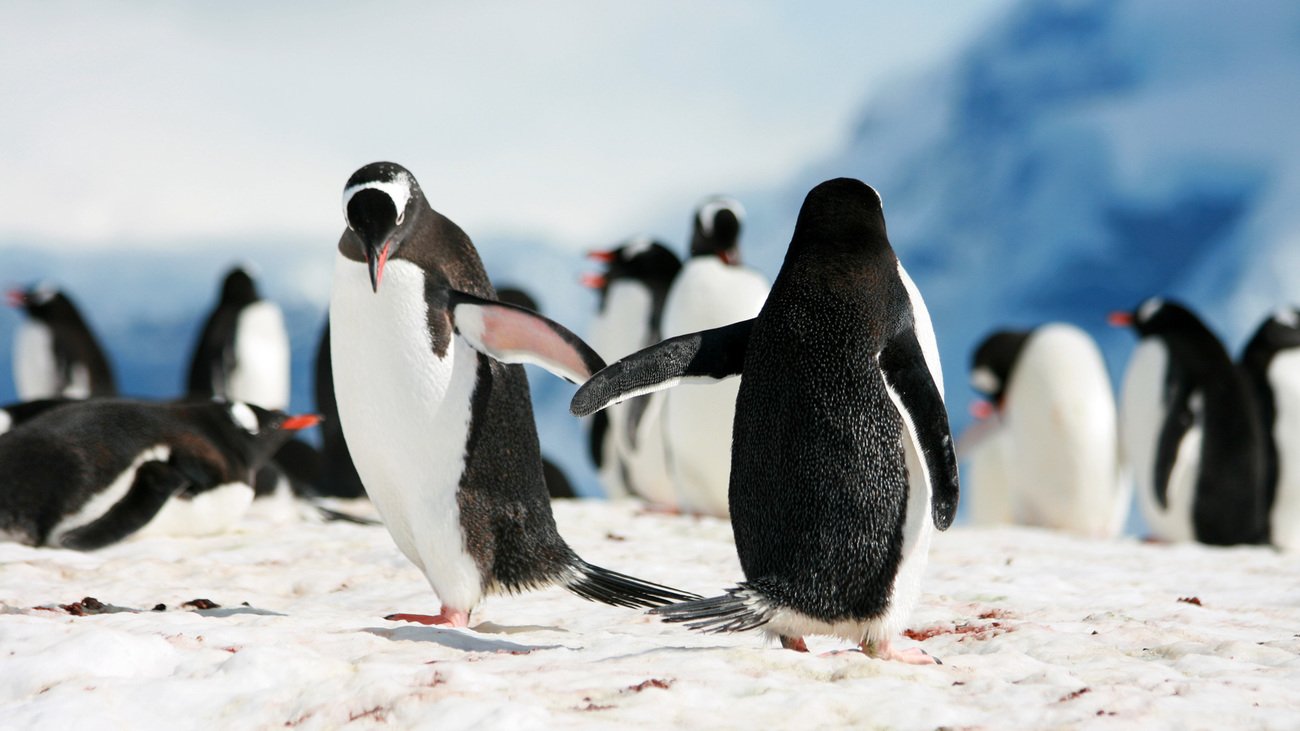
Flightless birds generally have smaller wing bones and lack a keel, the part of the sternum in a bird’s skeleton that anchors their flying muscles. Just because they can’t fly doesn’t mean their wings serve no purpose—for example, penguins’ wings have evolved to help them swim.
Most birds can use their wings to fly. Unlike animals that glide, they are capable of true flight, also called ‘powered’ flight.
There are dozens of orders of birds within the class Aves. Though the total number is debated, some researchers suggest there are around 41 total orders. Here are some of the most common types of birds.
Passerines, also known as perching birds (order Passeriformes), are the largest order of birds. More than half of all bird species are passerines. They are generally small birds and have feet adapted for perching on tree branches. Examples of passerine birds include finches, sparrows, songbirds, crows, and ravens.
The order Apodiformes is the second most diverse order of birds, containing swifts and hummingbirds. They are known to be some of the most skilled fliers in the animal kingdom. Hummingbirds are the only animals that can hover in the air, and they do so by flapping their wings at incredible speeds—up to 70 wingbeats per second!
Piciformes is another very diverse order of birds. This group includes woodpeckers, toucans, barbets, jacamars, honeyguides, and puffbirds. Most Piciformes are insectivorous, and their feet are adapted for clinging to tree trunks.
Parrots (order Psittaciformes) are a large group of birds characterized by their curved beaks, upright stances, strong legs, and clawed feet. They are some of the most intelligent birds, and many can mimic sounds like human speech. They are said to be the only tripedal animals, meaning they move with three limbs—their third ‘foot’ being their strong beaks, which they use to climb among tree limbs.
Shorebirds (order Charadriiformes) are birds that generally live near the water and eat invertebrates and other small animals. This order includes gulls, plovers, sandpipers, and more.
Members of the order Galliformes, including turkeys, chickens, quail, and other landfowl, are known to be reluctant flyers—meaning they can fly, but they don’t do it as often as other birds. However, because of their large size, many Galliformes possess extremely powerful flight muscles. If you’ve ever seen a turkey fly, you know what an incredible sight it is!
Raptors, also known as birds of prey, encompass the orders Accipitriformes (hawks, eagles, kites, and vultures), Strigiformes (owls), Cathartiformes (New World vultures), Falconiformes (falcons), and Cariamiformes (seriemas). These birds are known for their prowess as predators. Their wings allow them to spot small animals from high in the sky and swoop down to catch their prey—except for seriemas, which are flightless.
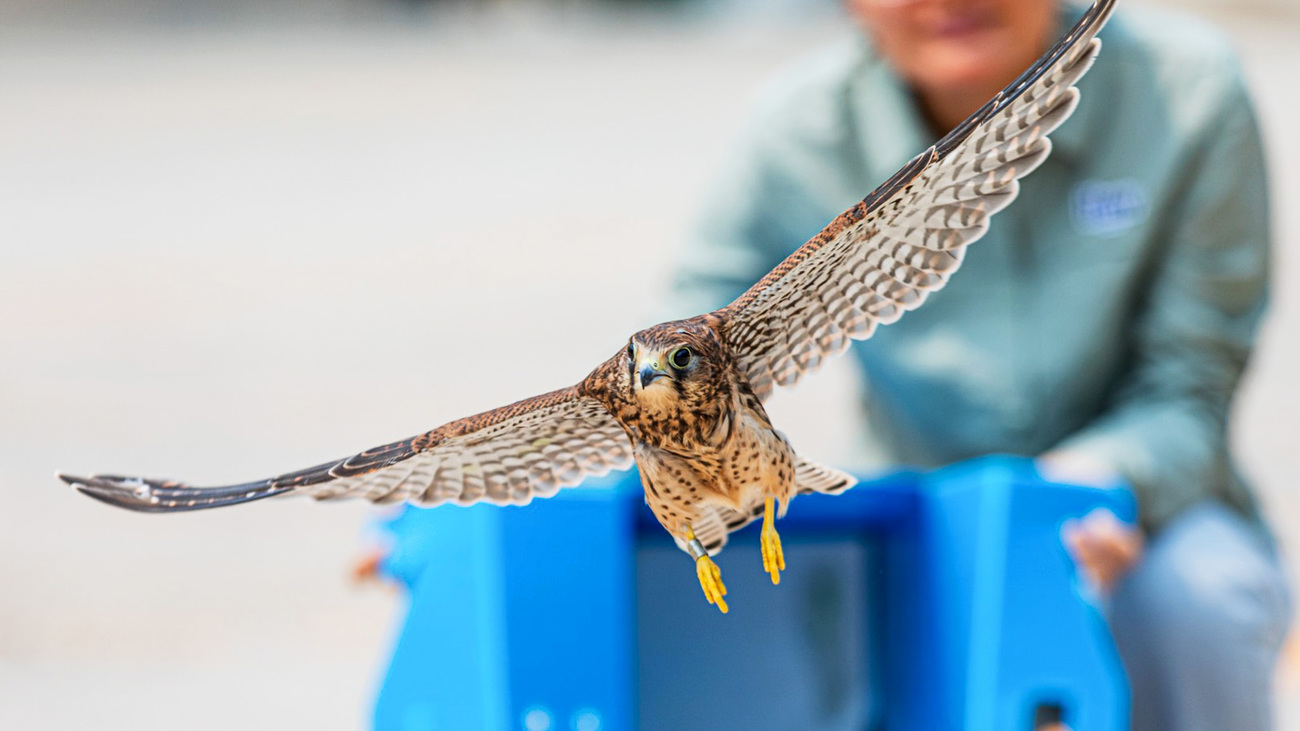
Of the over 11,000 bird species assessed by the IUCN, 232 are classed as critically endangered, 405 as endangered, 717 as vulnerable, and 940 as near threatened. Over 160 of the assessed bird species have gone extinct or are extinct in the wild. Some common threats wild birds face today include invasive species, outdoor cats and dogs, deforestation, pollution, poaching, and climate change. IFAW is working around the world to protect birds and other animals from these threats, including at our Beijing Raptor Rescue Center.
Insects are the only invertebrates with wings. Besides birds and bats, they are the only animals capable of true flight. Insects fly by moving muscles that indirectly move their wings by altering the shape of the thorax.
Most flying insects have two pairs of wings—examples include grasshoppers, bees, dragonflies, wasps, butterflies, and moths. Flies, on the other hand, have just one pair of wings.
Some insects, like beetles, are clumsy fliers, while others can perform acrobatic maneuvers or even hover, in the case of flower flies and hover flies.
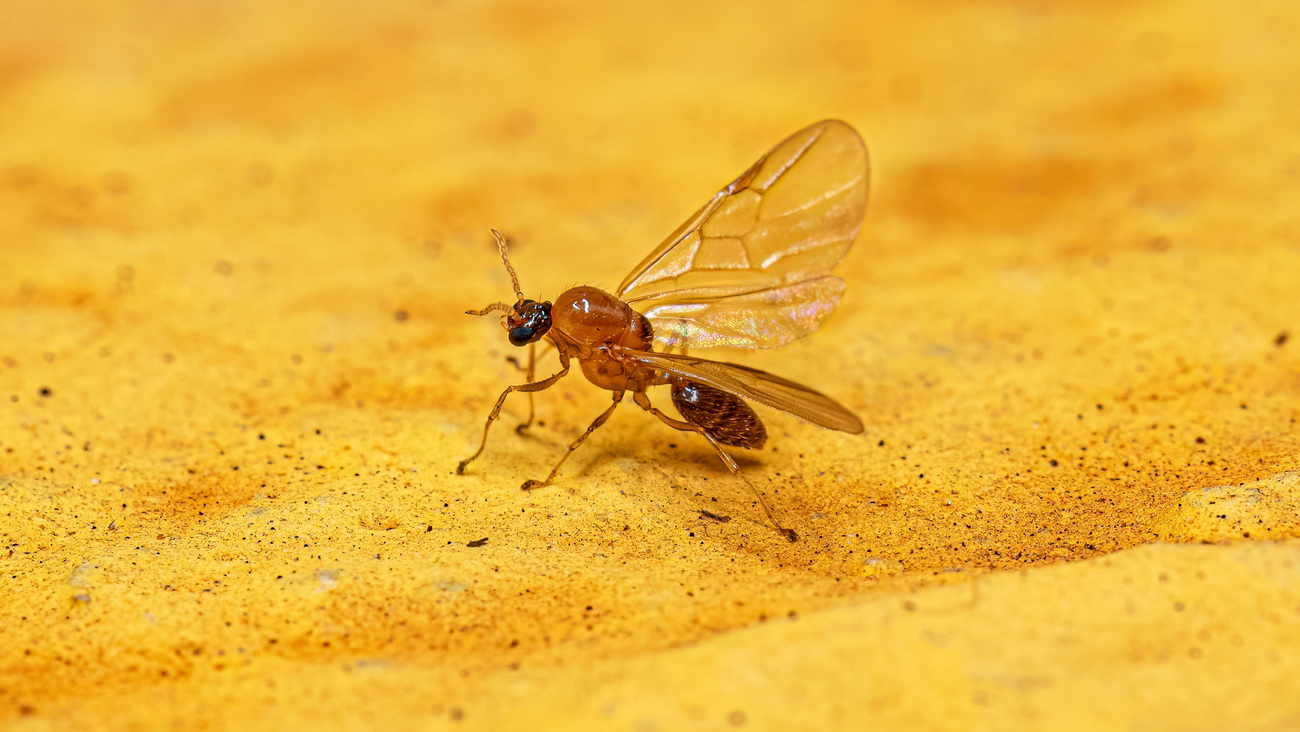
The fastest flier of all insects is the sphinx moth, which can reach speeds of 53 kilometers per hour (33 miles per hour). The insect with the fastest wingbeats is the midge, at 62,760 beats per second. Today, butterflies and moths have the largest wings among insects, but prehistoric dragonflies had wings over 60 centimeters (2 feet) long.
Insects may seem like pests, but many are pollinators that we rely on in our food production. Other insects are important in their ecosystems as food sources for animals like monkeys, anteaters, lizards, birds, and amphibians.
While bats are the only mammals that can fly, other mammals like colugos and flying squirrels can glide.
Besides birds and insects, bats (order Chiroptera) are the only animals capable of powered flight. Unlike other mammals that can only glide, bats can truly fly. They use their wings to swoop and capture prey, flee from predators, find mates, and migrate long distances.
Unlike birds, bats don’t have feathers. Instead, their wings are made of thin membranes stretched between their long finger bones. Birds also have finger bones, but they are short and aren’t spread out in the way bats’ fingers are. Bats move their wings differently than birds, flicking them upwards and backwards to gain lift.
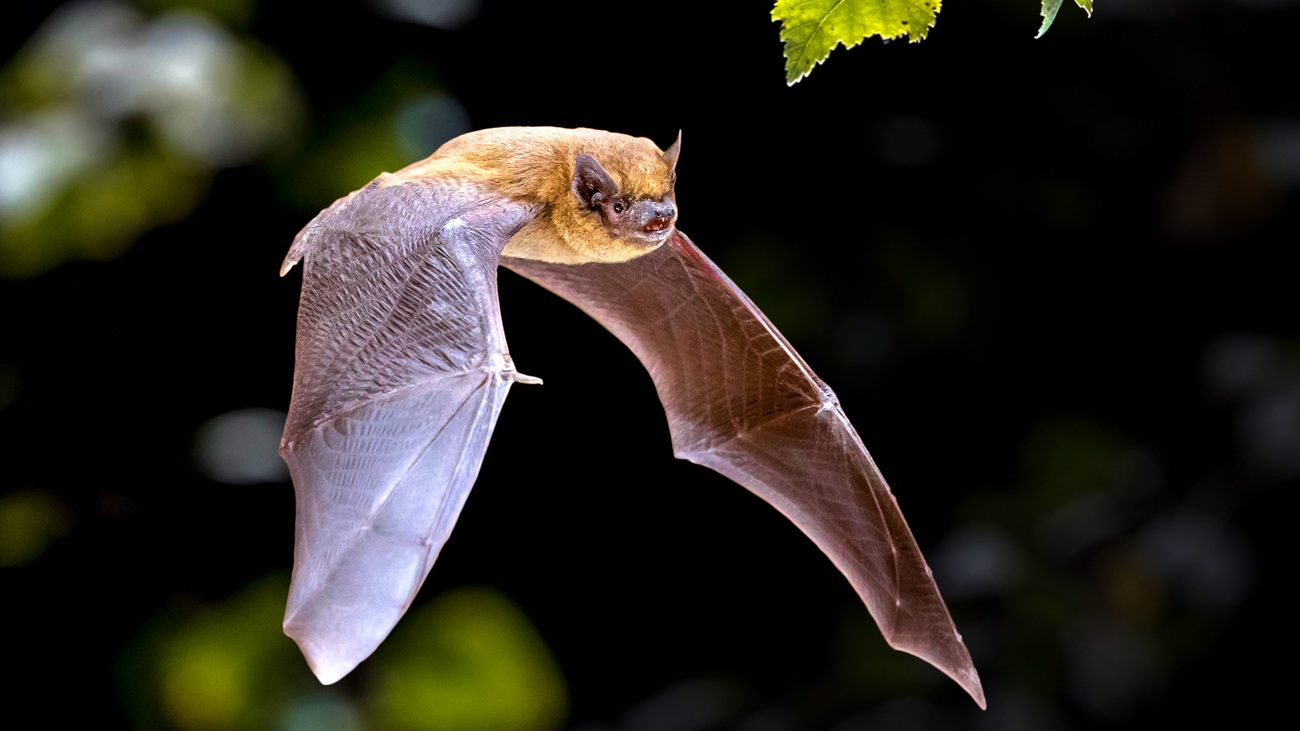
There are over 1,400 species of bats, making up about 20% of all mammal species. Generally, they are divided into two subgroups: microbats and megabats. While megabats depend on their sense of smell and sight to navigate and find food in the dark, microbats rely on echolocation.
Of the more than 1,300 bat species the IUCN assesses, 25 are listed as critically endangered, 86 as endangered, 110 as vulnerable, and 95 as near threatened. Nine of the assessed bat species have gone extinct.
Also known as flying lemurs, colugos (family Cynocephalidae) are small, tree-dwelling mammals capable of gliding. Their ‘wings’ are thin membranes running from their shoulders to their paws and between their legs and tail, so when they stretch out their limbs, they can glide between trees. They can glide distances of up to 60 meters (200 feet). Colugos are found in Southeast Asia, and they are nocturnal, solitary, and shy.
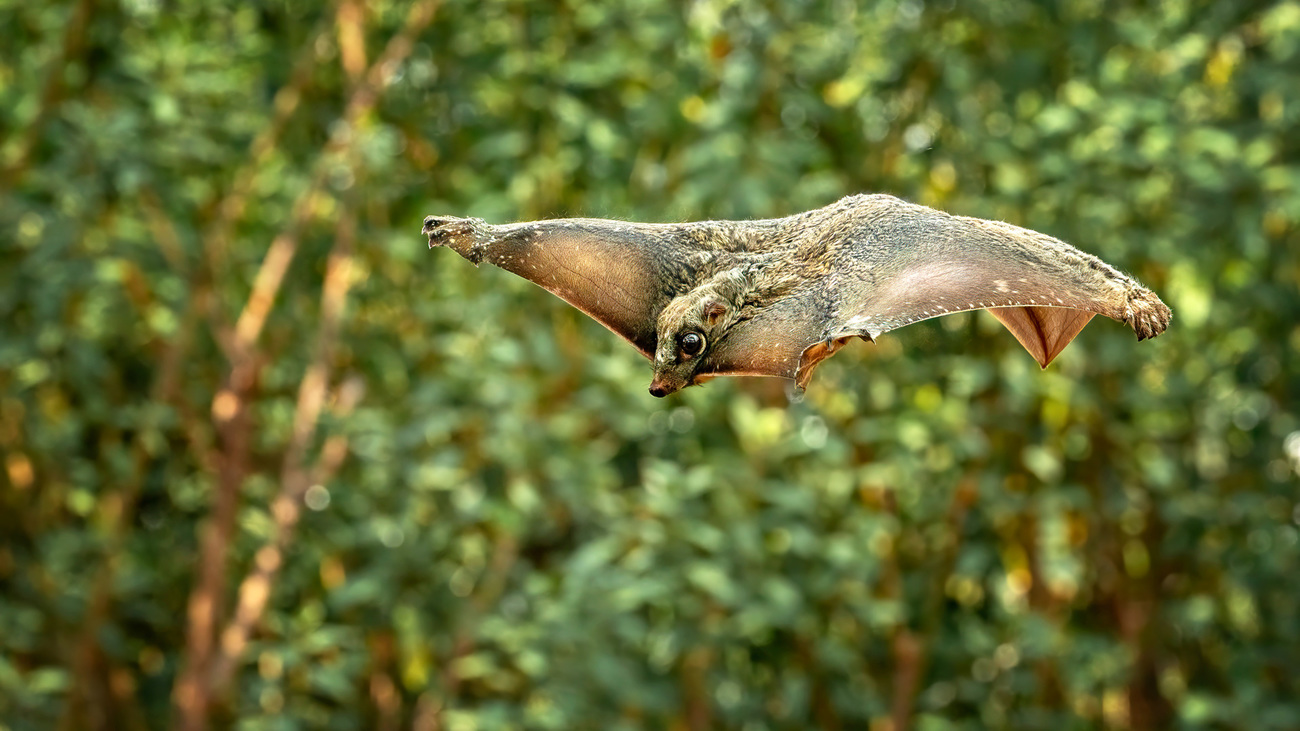
There are only two living species of colugo today: the Sunda flying lemur and the Philippine flying lemur. Both are classed by the IUCN as least concern. However, deforestation and hunting threaten their survival.
Flying squirrels (the group Pteromyini) are small mammals with membranes stretching from their wrists to their ankles, so they can glide from tree to tree. Their long, furry tails also provide balance and stability as they soar through the air. They can glide for more than 45 meters (150 feet). Some flying squirrel species in North America are biofluorescent, meaning they glow a bright pink colour when exposed to ultraviolet light. These magnificent gliders are found in North America, Central America, Asia, and Northern Europe.
Several flying squirrels are endangered and threatened. One critically endangered species is the Namdapha flying squirrel, found only in Namdapha National Park. Poaching and habitat loss from landslides and flooding are major threats to this species. Other endangered flying squirrel species include the Sipora flying squirrel, found on the small Sipora Island; the smoky flying squirrel, found throughout parts of Indonesia; the woolly flying squirrel, found in Pakistan and India; and the Mentawi flying squirrel, found in two islands of Indonesia.
No reptiles, amphibians, or fish are capable of true flight, but these species can glide.
Also known as flying dragons, flying lizards are tree-dwelling lizards of the genus Draco. They can glide because of membranes that span the length of their bodies, between their arms and legs. They use their long, thin tails to steer in the air and move their arms to adjust their trajectory, gliding up to 9 meters (30 feet) at a time.
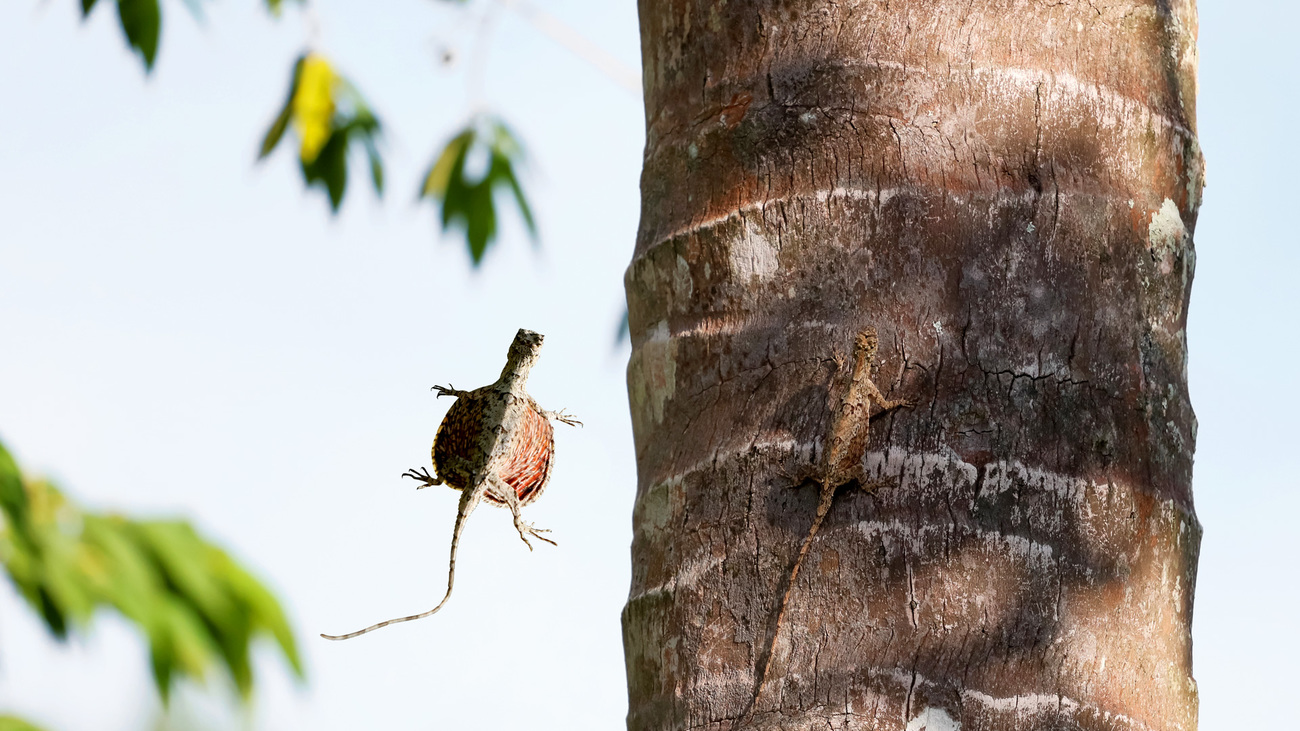
Found primarily in Southeast Asia, flying lizards are highly territorial. Males ‘guard’ a few trees as their own and use their gliding membranes in courtship displays. These lizards very rarely venture to the ground—females do so only to lay their eggs.
While the IUCN classes most flying lizard species as least concern, they still face threats in the wild. Habitat loss due to logging, tea plantations, and palm oil plantations could threaten the future of flying lizards, and so could the exotic pet trade.
Believe it or not, there are squid species that, like flying fish, can launch themselves out of the ocean and glide. A flying squid contracts its mantle—muscular tissue surrounding its body—which pushes a jet of water through its funnel, a tube by its head. It can fly three metres high above the water’s surface and glide as far as 30 meters in just three seconds, spreading out its fins and tentacles to catch the wind. Flying squids have membranes between their tentacles that function as parachutes.
Flying fish also have a set of ‘wings’—their pectoral fins are wide, translucent, and rigid, shaped like the wings of a bird. When leaping out of the water, flying fish propel themselves at speeds of more than 56 kilometers per hour (35 miles per hour), spread their wings, and glide in the air for up to 200 meters (650 feet). When swimming, they keep their wings pinned to their sides to be more streamlined.
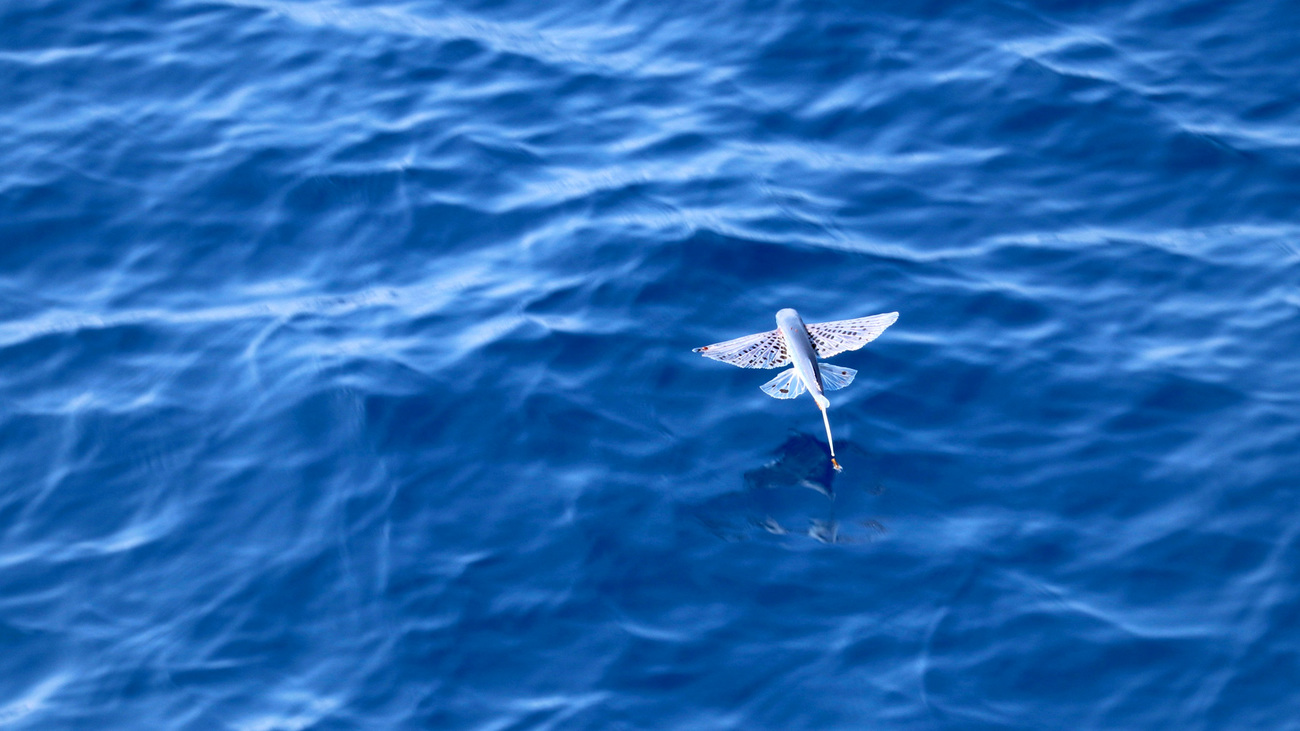
Though researchers believe flying fish have evolved this ability to escape predators beneath the ocean’s surface, gliding through the air above the water makes them more vulnerable to predation by seabirds. Flying fish are members of the family Exocoetidae, and there are over 60 flying fish species.
Like other gliding animals, flying geckos are adapted to an arboreal lifestyle. These reptile species have membranes between their toes and along the sides of their bodies that catch the wind when they jump from trees. One such species is Kuhl’s flying gecko, also known as the parachute gecko or gliding gecko. Found in Southeast Asia, these geckos have also developed microscopic hairs on their toes so they can cling to smooth surfaces, even glass.
The IUCN classes Kuhl’s flying gecko as least concern, though capture for the exotic pet trade is a significant threat to some populations of the species.
Hundreds of frog species can glide, too. They weigh less than other frogs their size and are well adapted to life high in trees. They generally have enlarged hands and feet with membranes between the fingers and toes and with skin flaps on their arms and legs. These membranes and skin flaps function as their ‘wings’. With this anatomy, some flying frogs can glide up to 15 meters (50 feet). This ability has evolved separately in a few different, unrelated frog species.
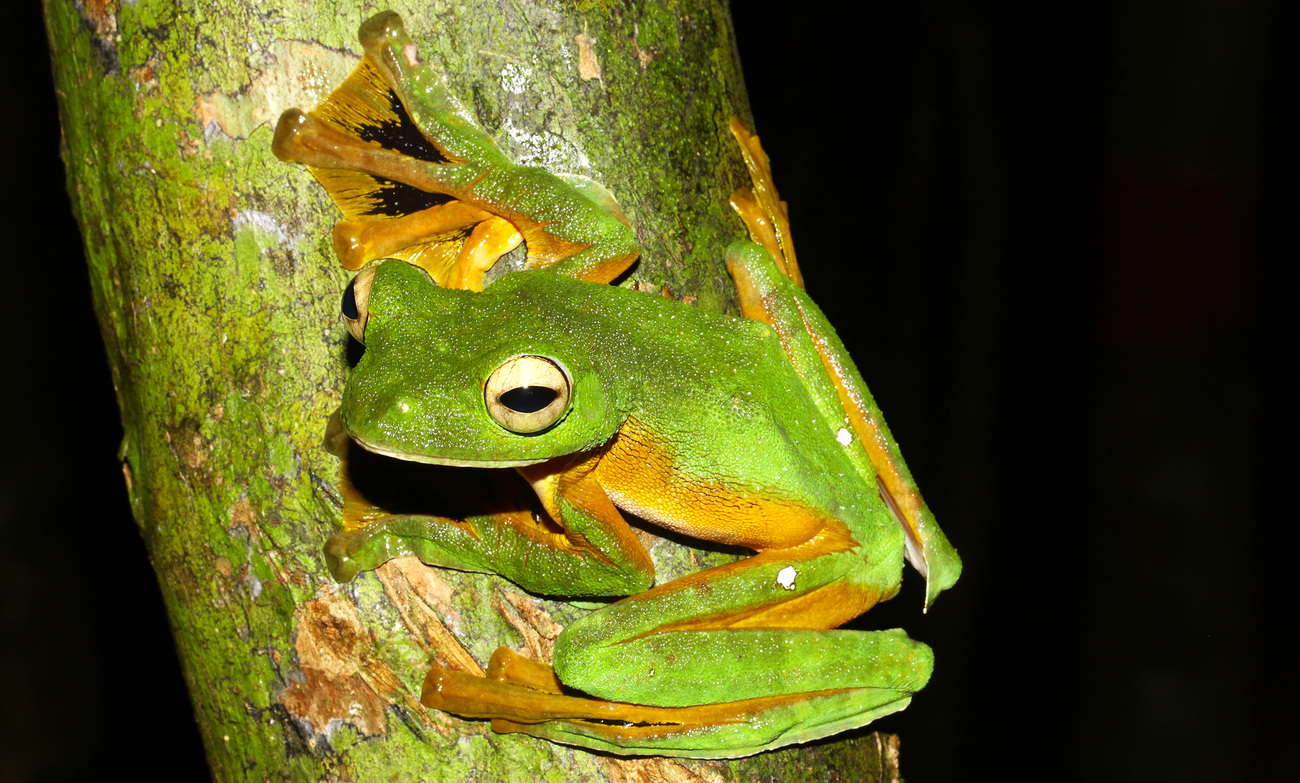
Want to help protect wild animals around the world? Learn how you can get involved.
every problem has a solution, every solution needs support.
The problems we face are urgent, complicated, and resistant to change. Real solutions demand creativity, hard work, and involvement from people like you.
Unfortunately, the browser you use is outdated and does not allow you to display the site correctly. Please install any of the modern browsers, for example:
Google Chrome Firefox Safari